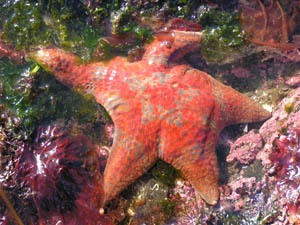|
A 4-6 Week Science Unit for Primary Level
Essential Question:
- Who Lives Where and Why?
Enduring Understandings:
- Living things have certain characteristics that help them survive.
- Living things need food, water, oxygen and shelter to survive.
- Science is a way to help us answer questions about the world around us.
This unit is designed for 2nd grade, but could be adapted to other grades. Students construct an understanding of habitat and the organisms that live within specific habitats, and gain respect for living creatures and care of the world around them through five different investigations, each building on the next. Science Notebooks are used throughout the unit to help students understand and organize information. Native Ways of Knowing are supported as students learn respect for living creatures and care of the world around them.
Ocean Literacy Principle Addressed:
- The ocean supports a great diversity of life and ecosystems.
|
Investigation 1: Habitats Students identify specific traits of a habitat, starting with familiar local habitats and then narrowing it to aquatic habitats. Who lives where and why? In Activity 1A Animal Habitats, students talk about animal homes and go on a nature walk to look for evidence of animals living in their neighborhood, followed by discussion. What lives in the water? What’s in the jar besides water? |
|
|
Investigation 2: We Search What lives where and why? |
|
|
Investigation 3: Brine Shrimp, Amazing Survivors! What are brine shrimp? |
|
|
Investigation 4: Field Session How do we find out information? How can we share information? |
|
|
Investigation 5: Communication How do we find information? |
Authors:
Jennifer Thompson, Teacher, Juneau School District
Denise Caposey, Teacher, Skagway School District
Linda Ramsey, Teacher, Mat-Su School District
Marilyn Sigman, Scientist, Center for Alaskan Coastal Studies, Homer, Alaska
Stephanie Hoag, Curriculum Consultant, Juneau, Alaska









